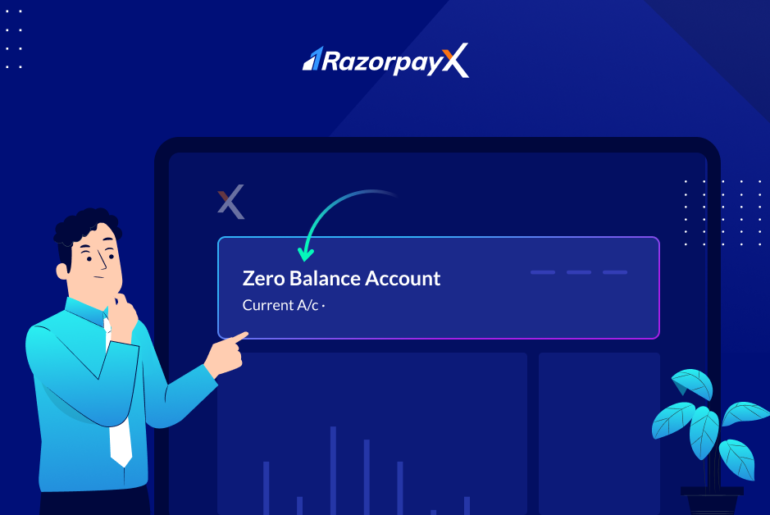Invoice processing is something all organisations have to deal with, be it big or small.
It starts with the accounts payable department receiving an invoice, verifying its details, getting approvals, and making payment. While it might sound simple, these steps can get frustrating when handling many invoices for different vendors.
Not to mention, any delay in invoice processing can impact your vendor relationships and, by extension, business outcomes.
This blog post highlights what invoice processing is and why you should automate it.
Table of Contents
What is Invoice Processing?
It is the process of handling an invoice right from its receipt till the time the payment is made. The accounts payable department (usually the accounts team) handles the bills and invoices raised against credit purchases.
It involves functions such as receiving the invoice, approving it, setting a remittance date, making the payment, and finally recording it in the ledger.
Invoice Processing Steps

1. Receiving and Verifying the Invoice Details
As soon as the company’s accounting department receives an invoice for payment via email, the first step is to verify the details of the invoice. The accounts executive matches the purchase order (PO) with the invoice and matches the purchased quantity, order no., and the billed amount.
The bill amount can vary depending on the type of invoice. Sometimes, the invoice could represent only a part of the total purchases. All this must be verified before proceeding further, and in case of any discrepancy, the issues must be resolved with the vendor.
This can be done either manually or through software like RazorpayX Vendor Payments. It automates various activities, from easy invoice sourcing, auto-deducting TDS, and built-in payments to automated accounting.
2. Getting the Invoice approved
Once all the important invoice details are verified by the accounts payable department, they must send the invoice for approval before making the payment. As the size of the business increases, the number of invoices also increases, making the approval a time-consuming process.
Invoices can even get misplaced in the folders on the desktop of your accountant. Automated invoice processing systems solve this problem by managing the documents digitally and saving time, all the while eliminating manual errors.
3. Checking for fraud and duplication
Supplier invoices are highly susceptible to fraud and duplication. The next step in is checking for any possible fraud or duplication.
Sometimes, there might be two invoices against a single purchase order resulting in duplicity of payment. Similarly, there could be other discrepancies, like a difference in the billed amount or purchase order number. The invoices should be thoroughly checked for duplication and fraud.
4. Forwarding the invoice for payment
After checking the invoices thoroughly for errors, fraud, and duplication and sorting out all the issues, the accounts payable department then gives its approval and forwards the invoice for payment. The payment for the invoice is then made, usually online.
5. Recording the invoice in the company’s ledger
The last step is to record the invoice and the payment details in the ledger for accounting purposes. Manual data entry and recording can be time-consuming, cumbersome, and vastly error-prone.
This is when RazorpayX Vendor Payments save the day. It auto-captures invoice details with an intelligent OCR, saving you manual data entry. And you never have to worry about paying twice with its smart de-duplication algorithm.
Benefits of Invoice Processing
1. Improved Efficiency: Invoice processing saves time by allowing a business to streamline its accounts payable process. Automation eliminates manual processing, making it easier to handle large volumes of invoices quickly and accurately.
2. Increased Accuracy: Automation reduces human errors and enhances accuracy. This leads to improved data and more precise financial reporting, enabling businesses to make better decisions based on reliable data.
3. Reduced Costs: Automated invoice processing eliminates the costs associated with manual data entry, such as labour and paper. It also reduces costs associated with errors, such as late payments, incorrect payments, and dispute resolution.
4. Improved Cash Flow: Automated invoice processing enables businesses to get paid faster, as invoices are processed quickly and accurately. This leads to improved cash flow and better-working capital management.
5. Improved Visibility: Automated invoice processing provides greater visibility into the accounts payable process. This makes it easier to track invoices and monitor payment status, enabling businesses to stay on top of their cash flow.
Importance of automating Invoice Processing
Automating invoice processing can greatly improve efficiency and accuracy for businesses.
➡️It can save time and money by streamlining the process and reducing the need for manual data entry and review.
➡️Automating the process can also help to reduce errors and eliminate duplicate invoices, which can help to improve cash flow.
➡️Automating invoice processing can also provide better visibility into the invoicing process, allowing businesses to better track payments and revenue.
Automate Invoice Processing with RazorpayX
Having understood the benefits and importance of automated invoice processing, here’s how RazorpayX Vendor Payments can help you:
- Easy sourcing of invoices– RazorpayX allows you to add invoices to the software in multiple ways. You can either forward them via email, let vendors add invoices directly on the portal, or import the invoices through accounting software.
- Auto-capture invoice details– It saves you from doing manual data entry by auto-capturing the details of the invoice. It also helps avoid duplication of invoices and saves you from paying more than once.
- Automatic deduction of TDS– Just add the TDS category of the vendors, and RazorpayX auto-calculates the TDS amount and deducts the TDS for every invoice.
- Quick and seamless reconciliation– It provides you with seamless reconciliation between vendor invoices and the accounting software.
Automation is the key to streamlining invoice processing. RazorpayX can help you save time, effort, money, and resources by automating invoice processing, payment, reconciliation, and TDS deduction.
Sign up now to automate invoice processing!
Read more
FAQs
What are the steps of invoice processing?
Invoice processing steps involve - receiving the invoice, approving it, setting a date of remittance, making the payment, and finally recording it in the ledger. Please read the detailed elaboration of each step in the blog.
What is the purpose of invoice processing?
It is a part of vendor management function of accounts payable department in companies to manage invoices from vendors and make payments for services received from vendors. It starts with the accounts team receiving an invoice, verifying its details, getting approvals, and making payment.



